If you’re considering limewash paint for your next DIY project, this post has got you covered! Keep reading to find out how we transformed our walls with this subtle and sophisticated old-world technique.
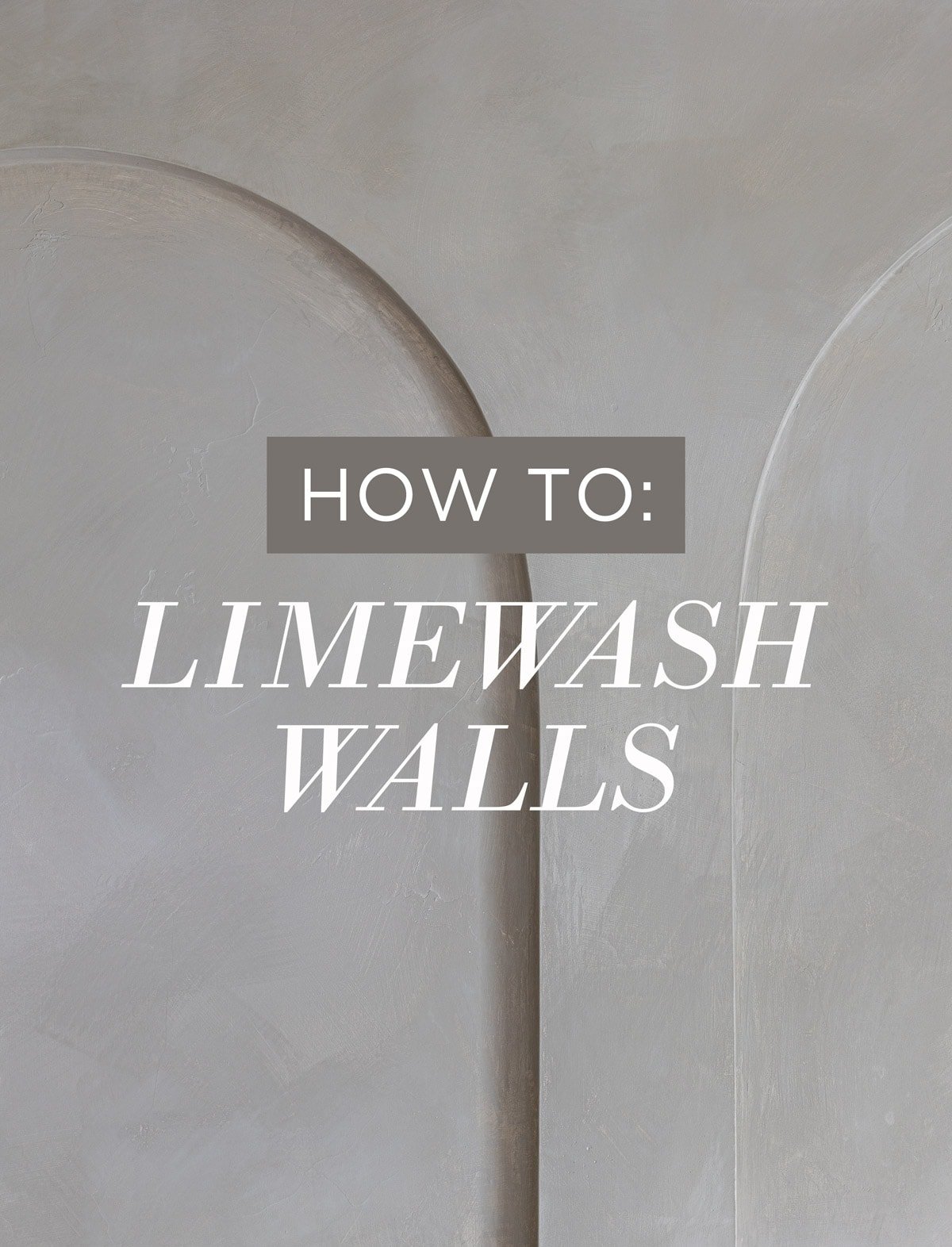
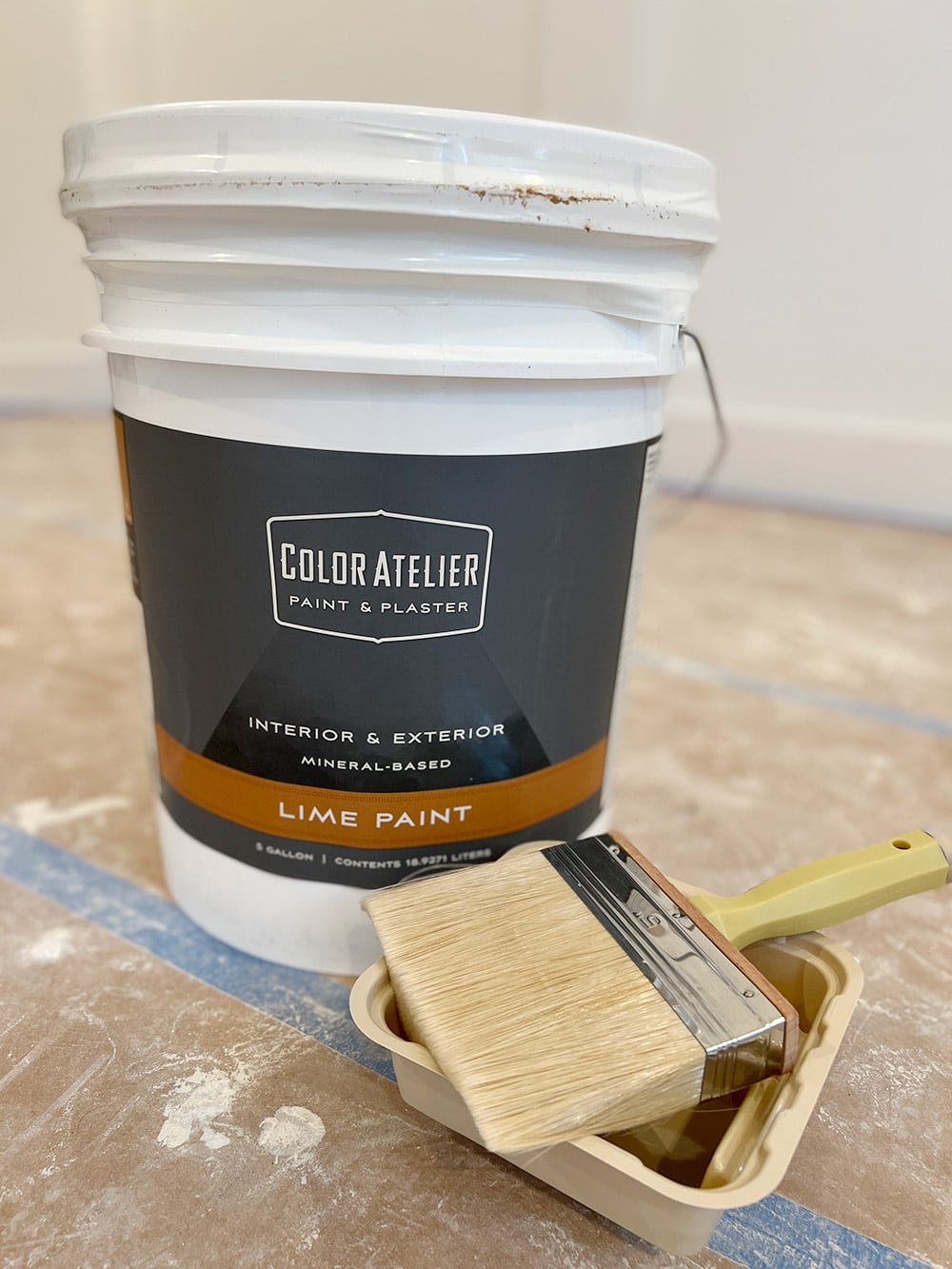
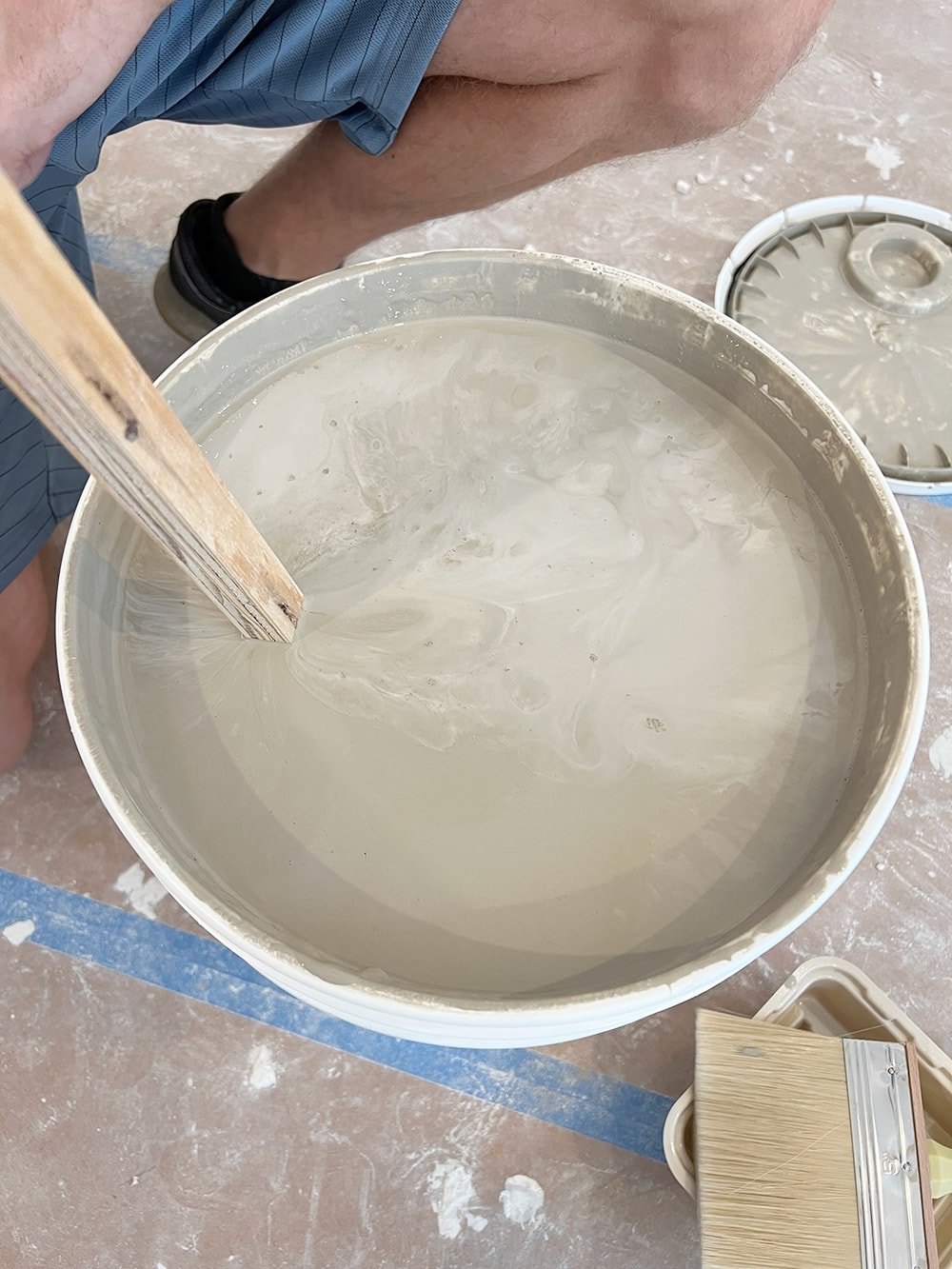
Prepping walls for Limewash
Limewash paint can be applied directly over breathable surfaces such as brick, cement, stucco and plaster. Previously painted surfaces should be primed first for best results. Limewash can be applied on smooth or textured walls, but we decided it was worth it to skim coat our textured walls first to create a smooth and even canvas. We then used Color Atelier’s Mineral Primer, per their recommendation.
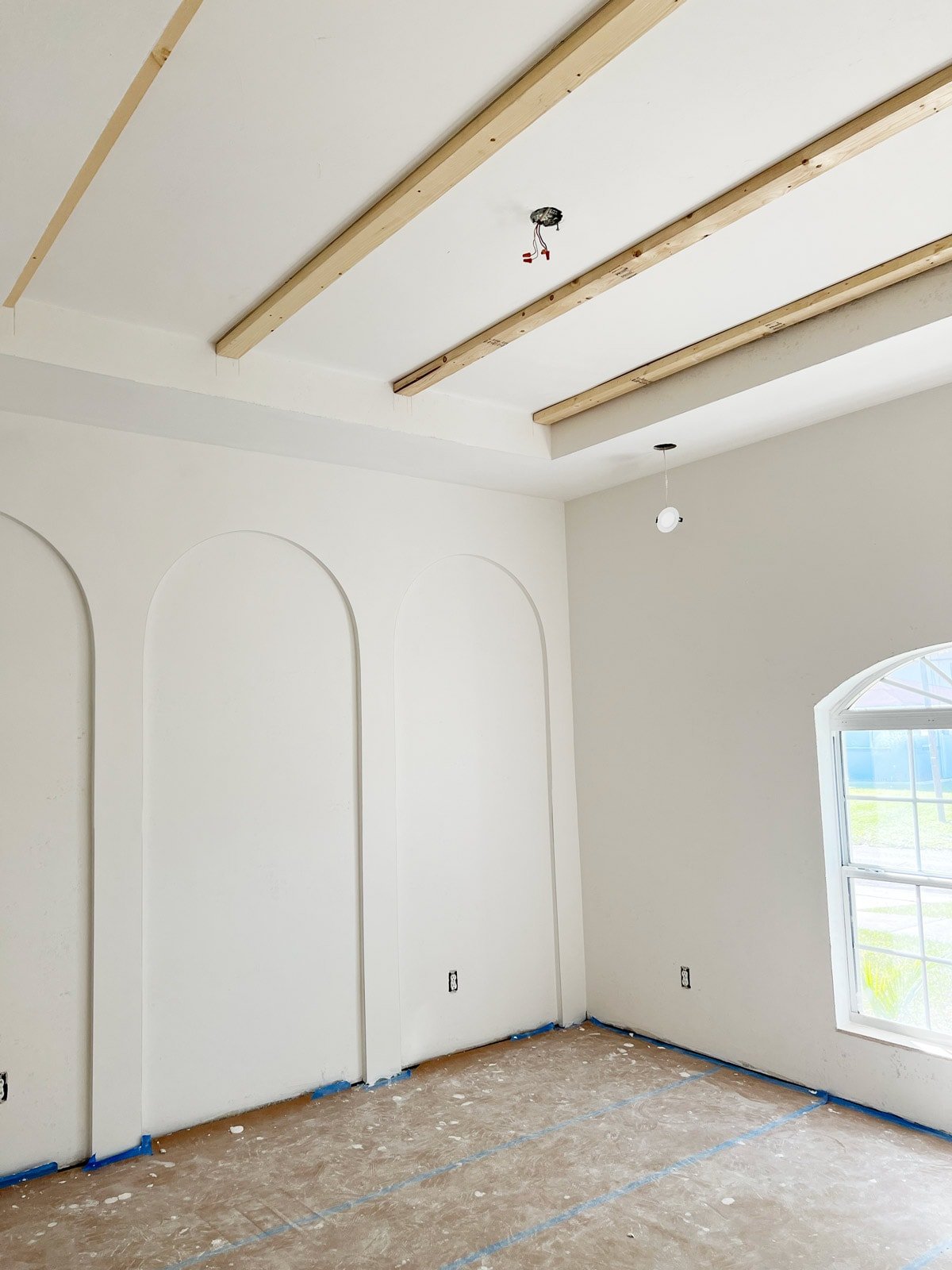
FYI: You can see how limewash looks on textured walls in this post from I Spy DIY.
How to Limewash walls
There are different approaches to applying limewash, and no one “right way” to do it. Fortunately, it’s easy to work with and pretty forgiving.
After watching several YouTube videos, we decided to start on one side of the room and quickly work our way around the room to keep a ‘wet edge’ and avoid overlapping dry areas.
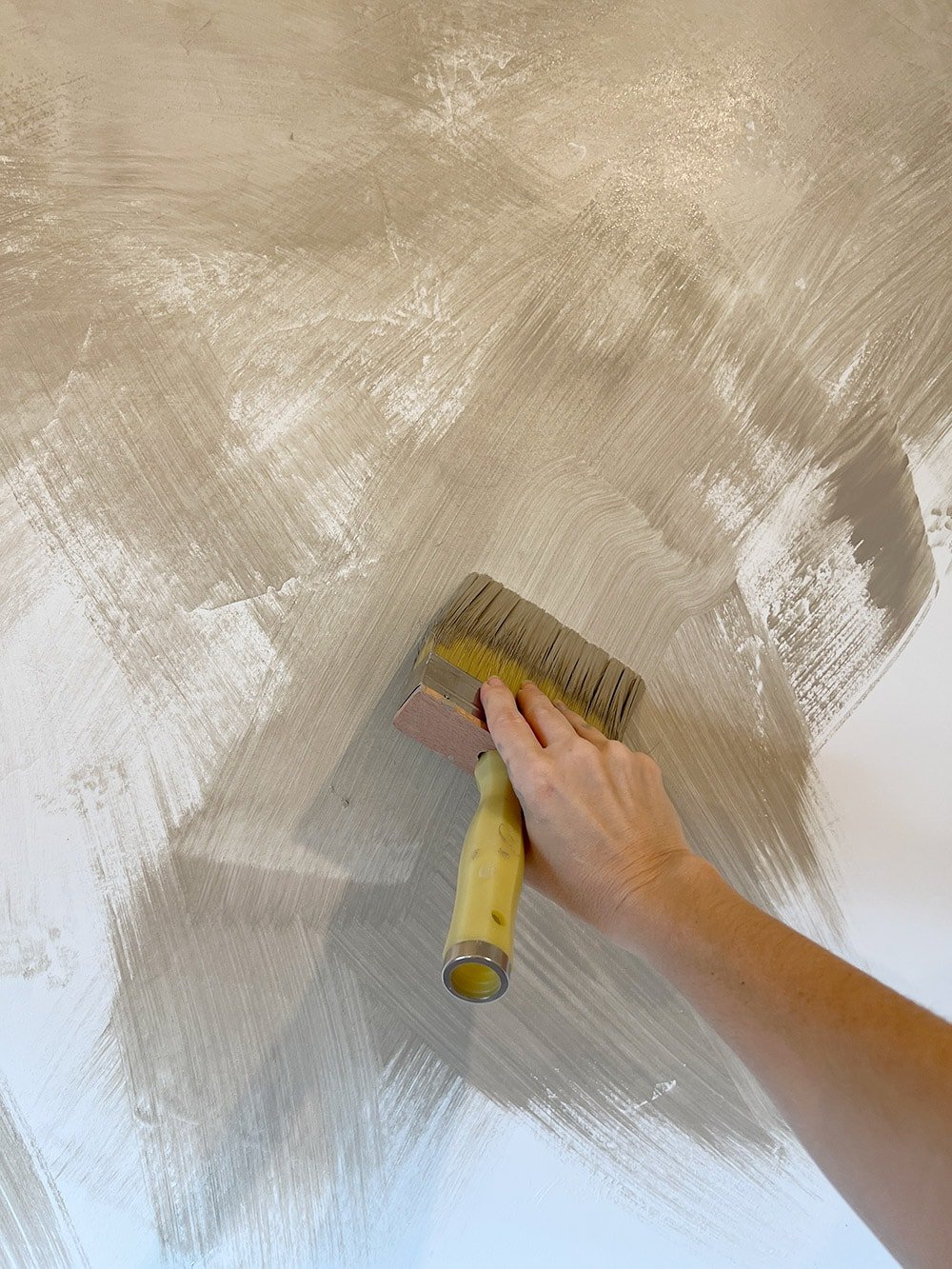
Using a block brush, create random and multi-directional strokes, working your way outwards from the center. Some people like to create several large ‘clouds’ and blend them together, while others use short strokes and work from one side to the other.
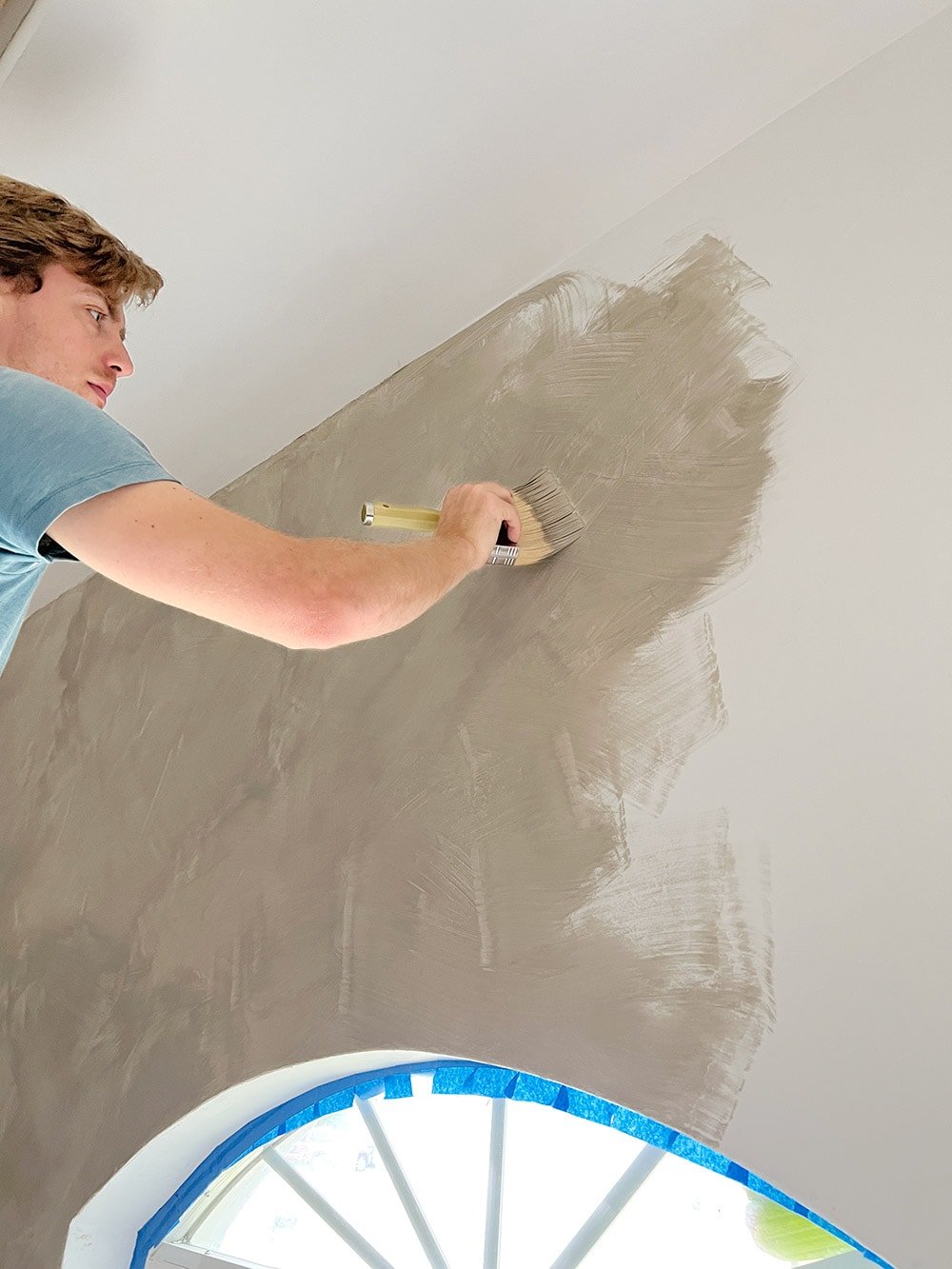
We tried a combination of different techniques, using medium-sized strokes as well as curved motions, which was my favorite. It creates more organic movement and a cloud-like appearance.
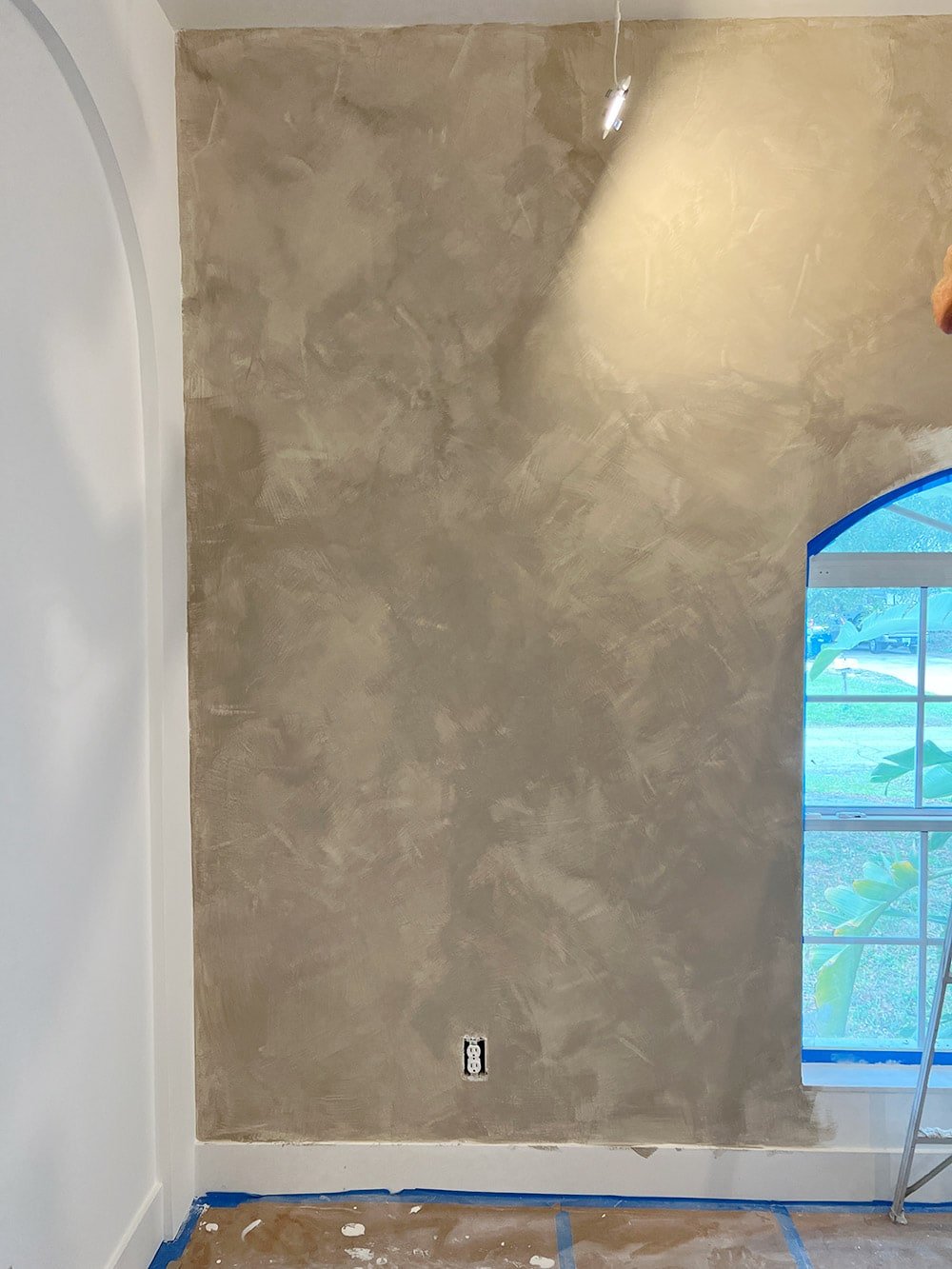
Limewash applies quite easily—and more fun than regular paint! We finished the first coat on this entire wall in 30 minutes.
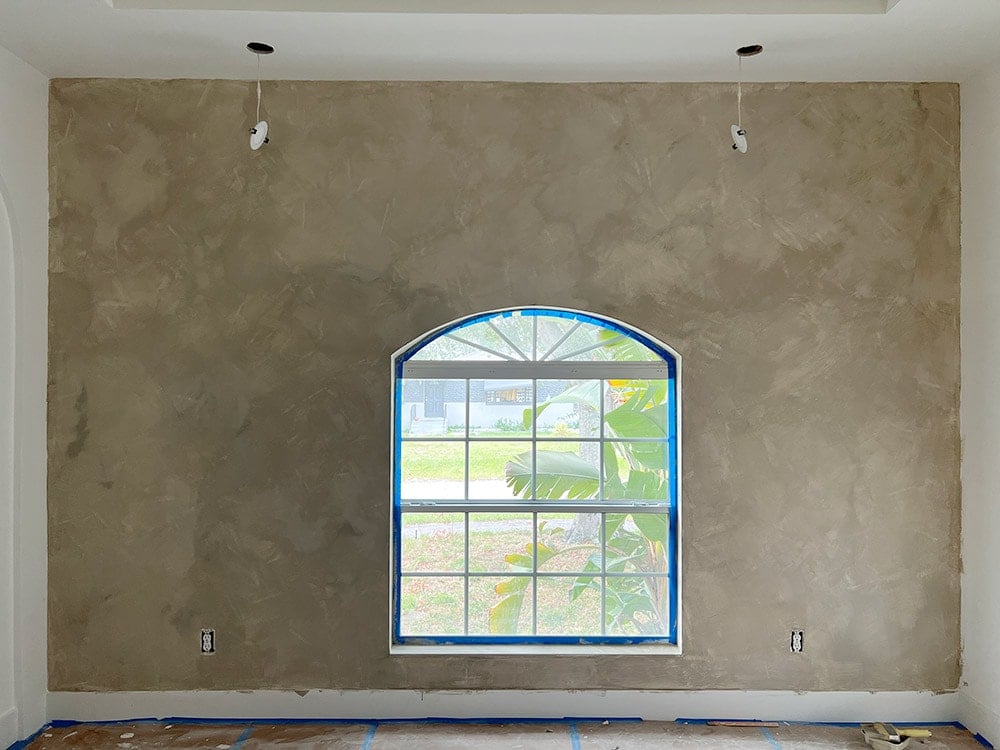
When starting on a new wall, use your brush to carefully cut in along the edge and smooth outwards. You want to be careful to avoid leaving brush marks on the adjacent wall, as that will be harder to fix later.
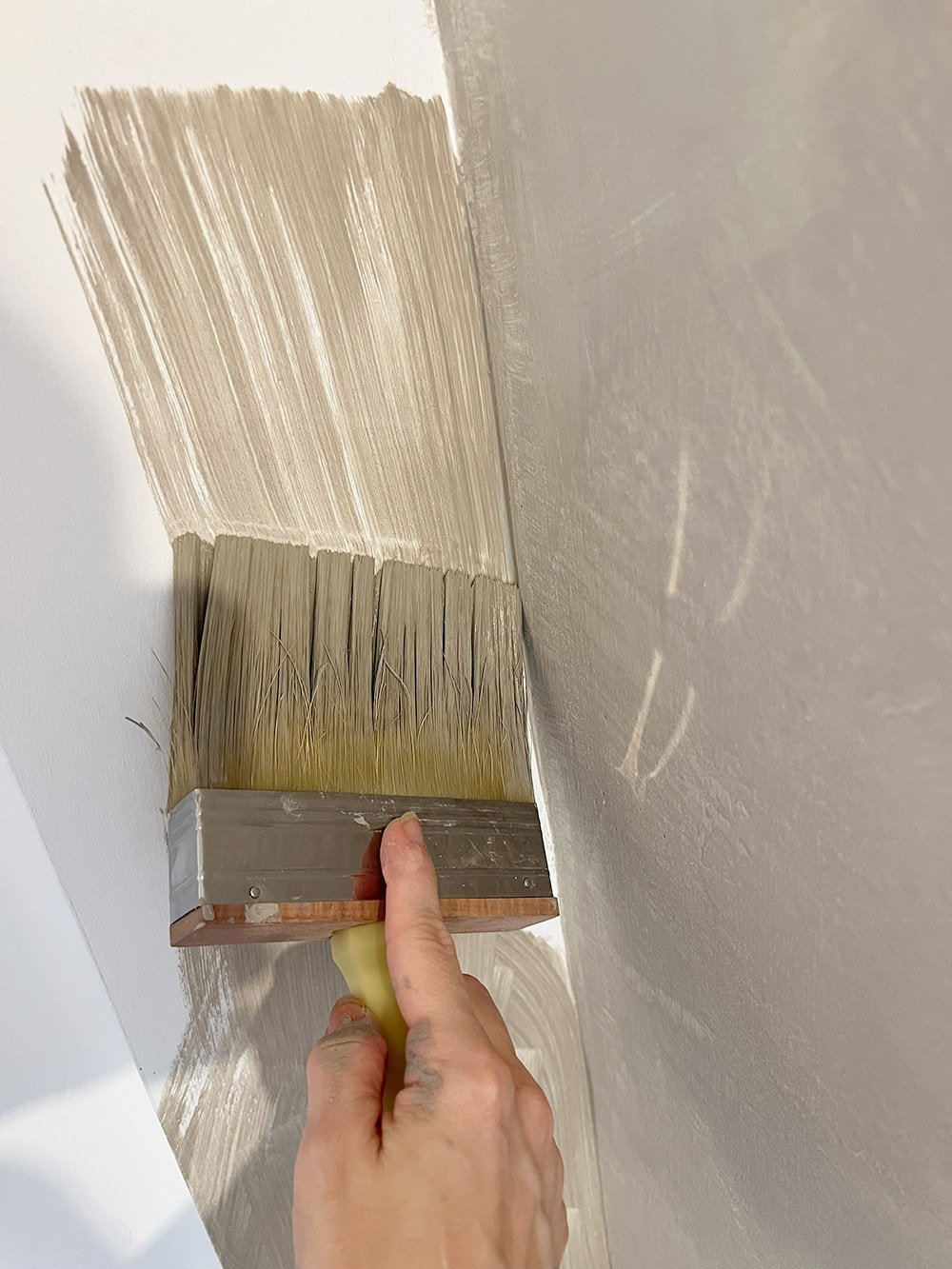
You want to avoid touching up the wall after it has dried, as those areas will dry darker. We overlapped in some spots and those areas were noticeable after it had dried.
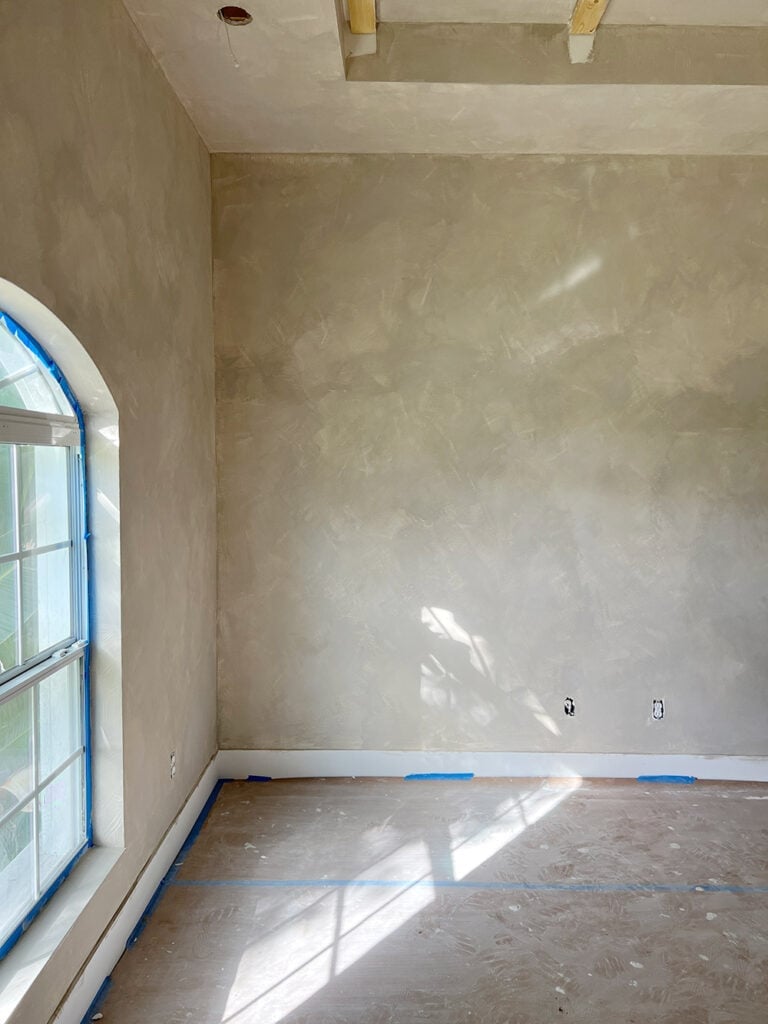
Limewash will become lighter as it dries, and since it’s quite thin, it won’t cover the entire wall on the first coat (at least on a smooth primed wall). It will look like a hot mess at first, but don’t worry! That’s what the second coat is for.
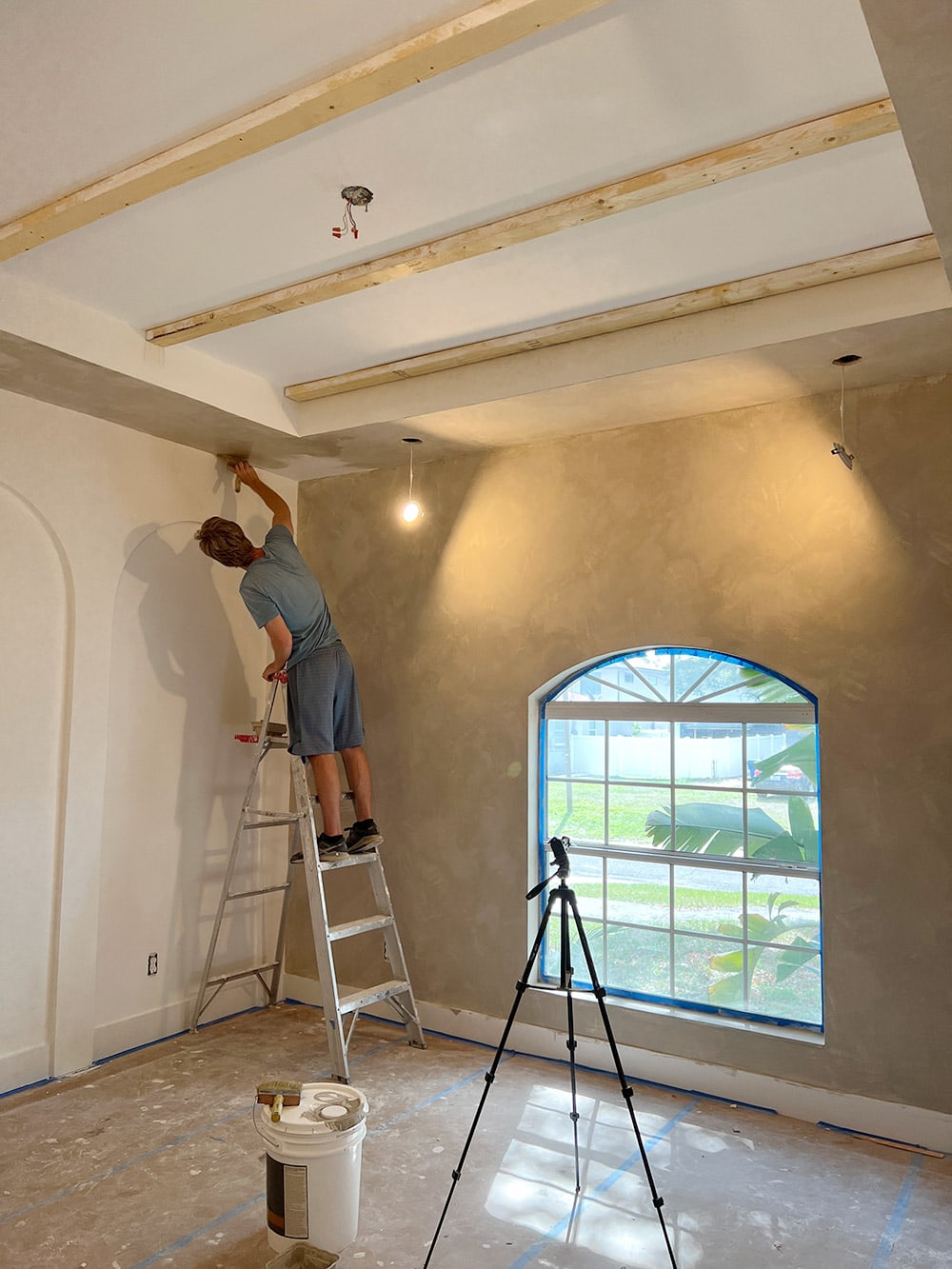
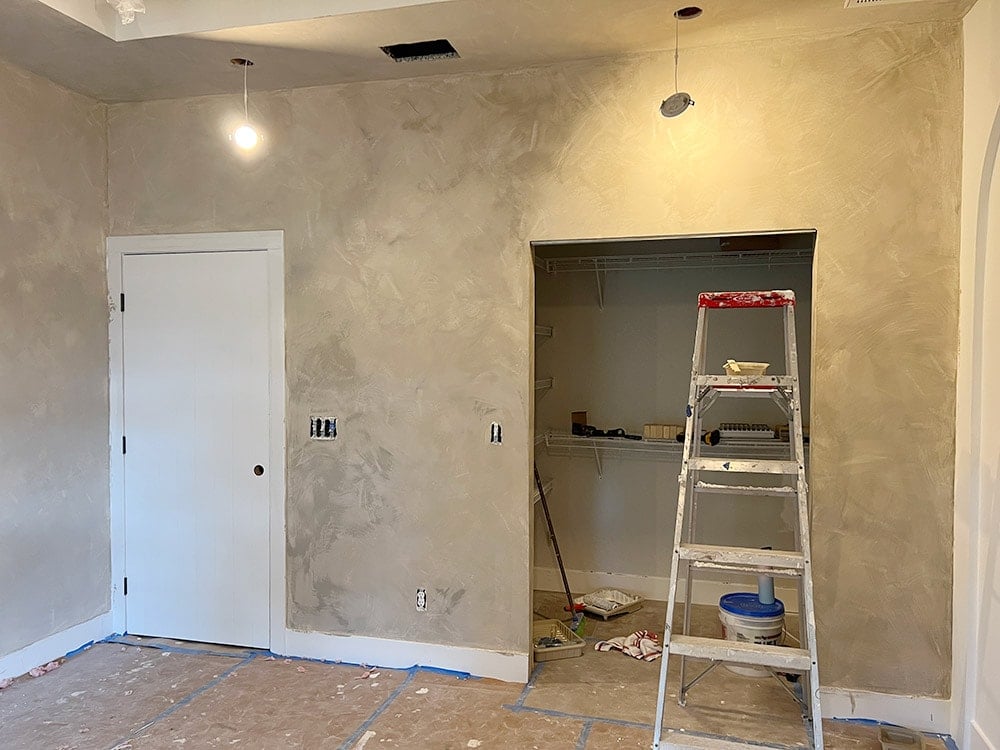
We also limewashed the ceiling because I thought the room would feel more intentional and finished (and cozier) I’m glad we did.
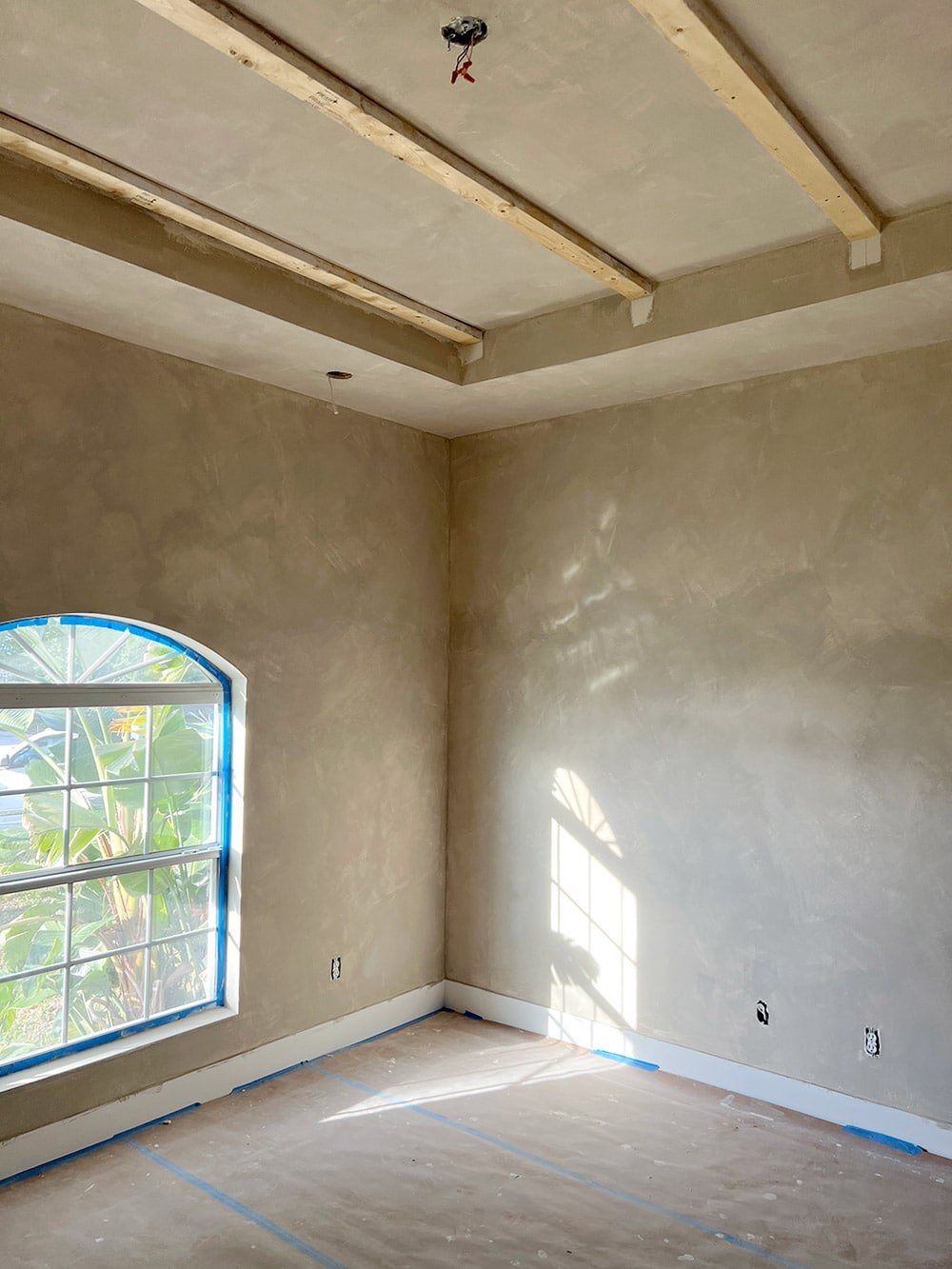
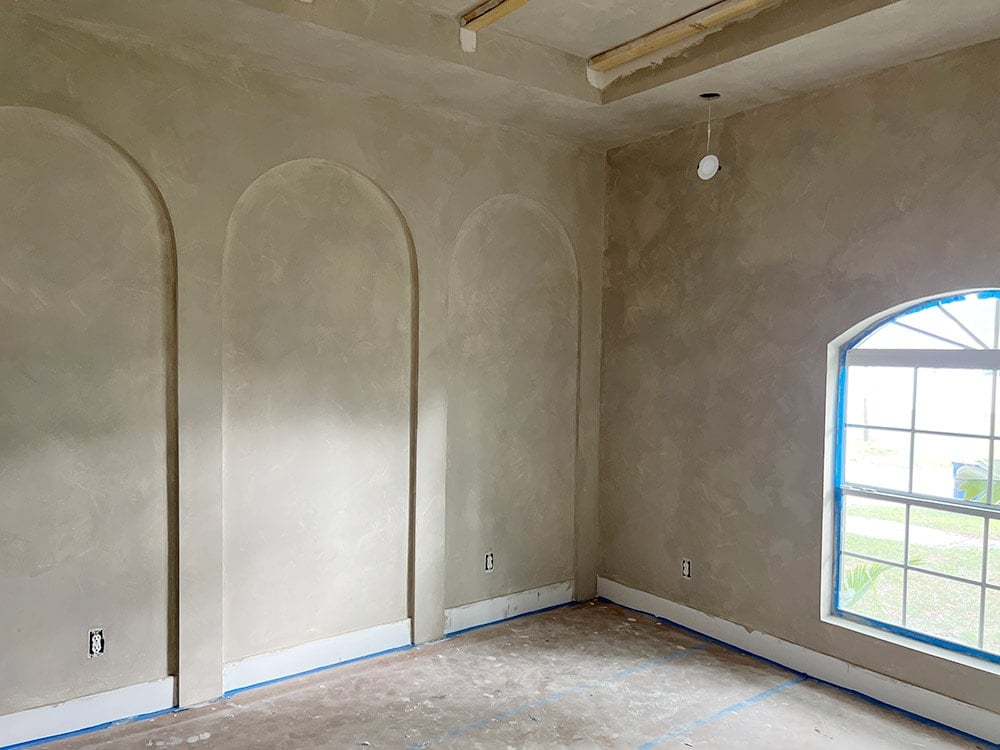
Applying a second coat of limewash
Typically, two coats of limewash is all you need—but you can always add a third if you aren’t happy with the results. We didn’t dilute either coat with water, but that’s an option if you’d like to create more color variation.
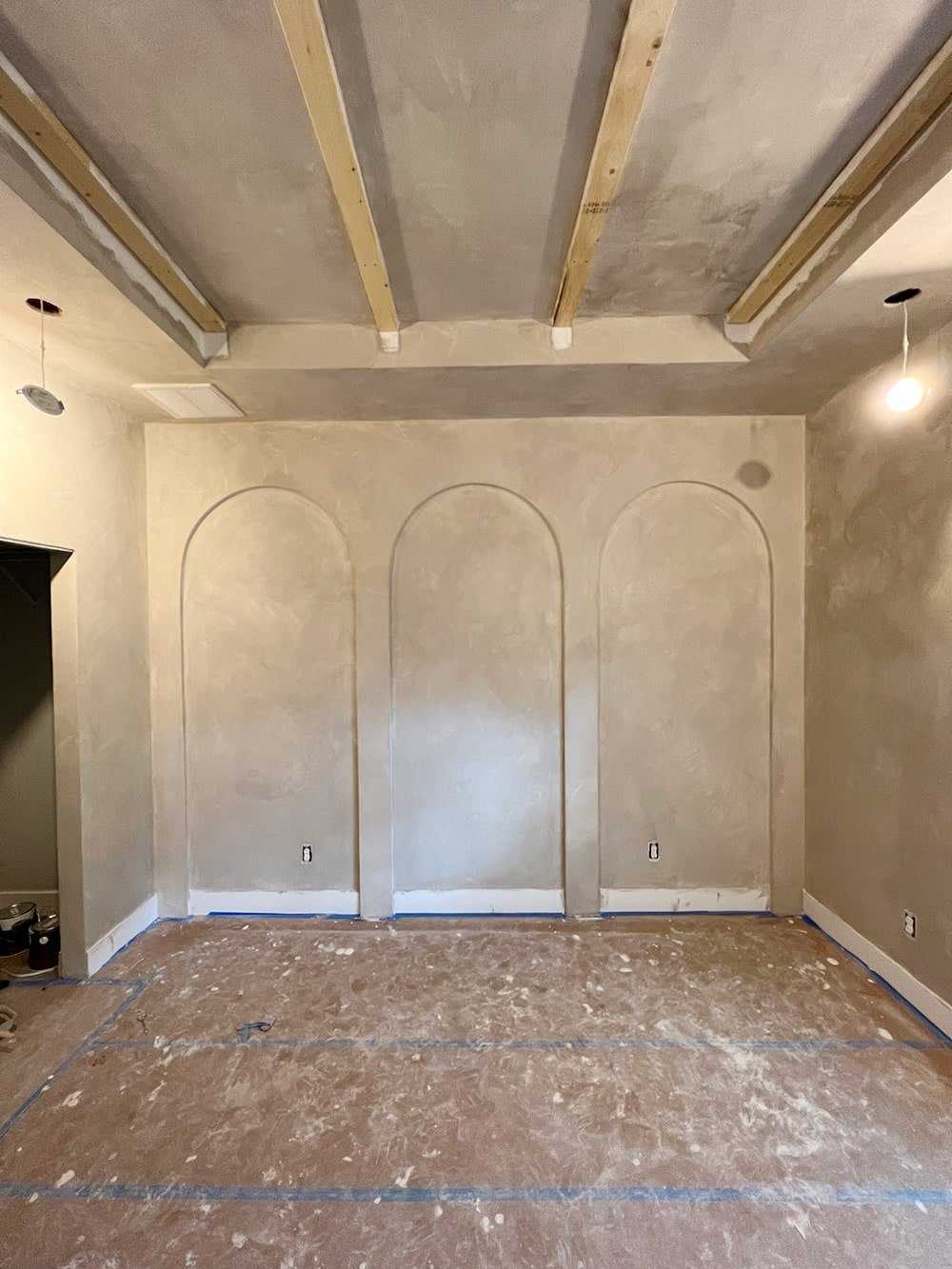
I was a little nervous after watching the first coat dry, but fortunately the second coat changed everything.
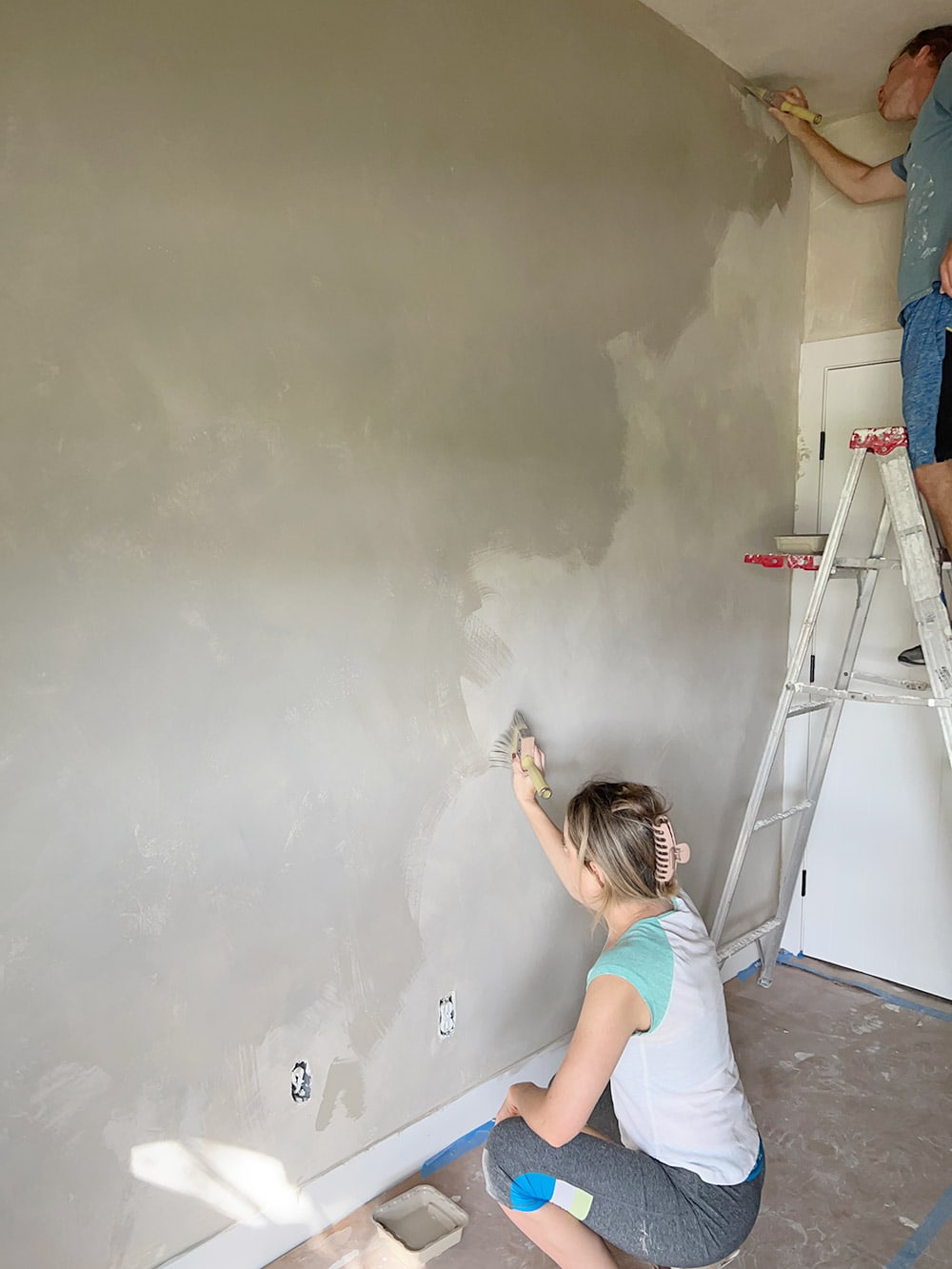
The coverage was much better on the second coat, and we applied it relatively thick to make sure none of the underlying wall showed through.
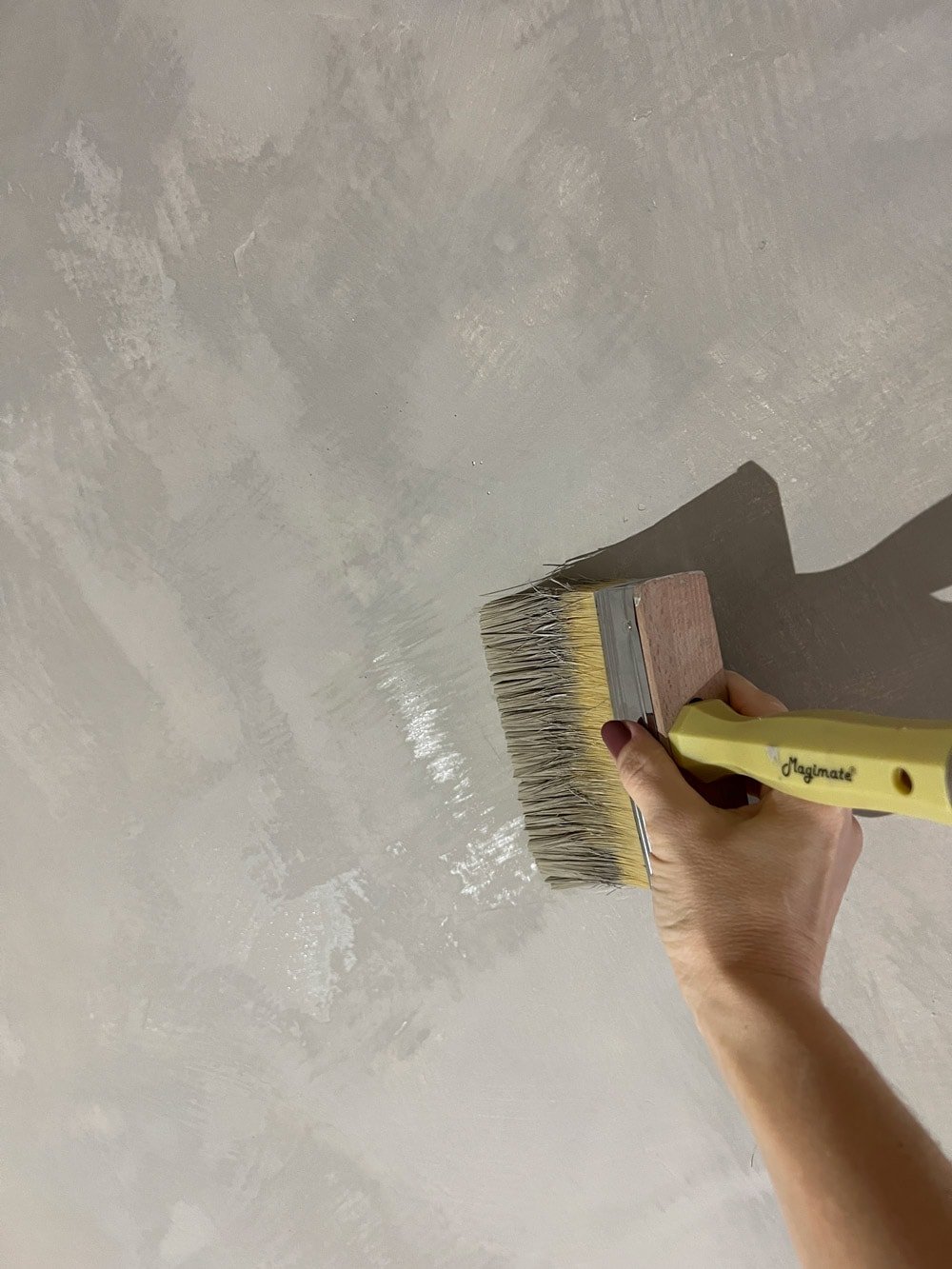
It immediately went from bad-paint-job, to soft and subtle. Exactly what I had hoped for!
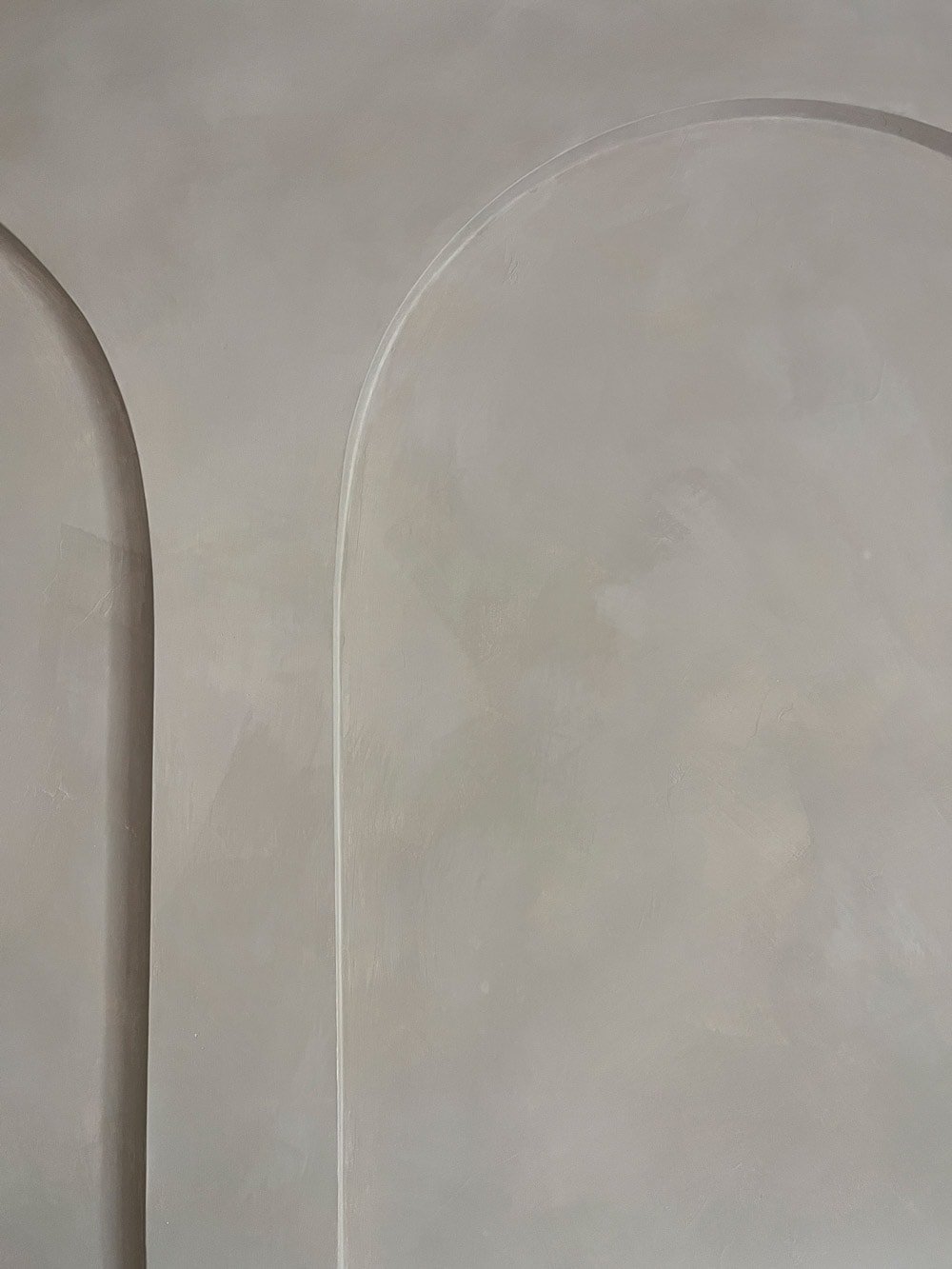
If you prefer a subtler look, the key is to coat the wall completely and blend well. Be careful for areas with thinner coverage and visible brush strokes. It’s important to have a quality brush with finer bristles.
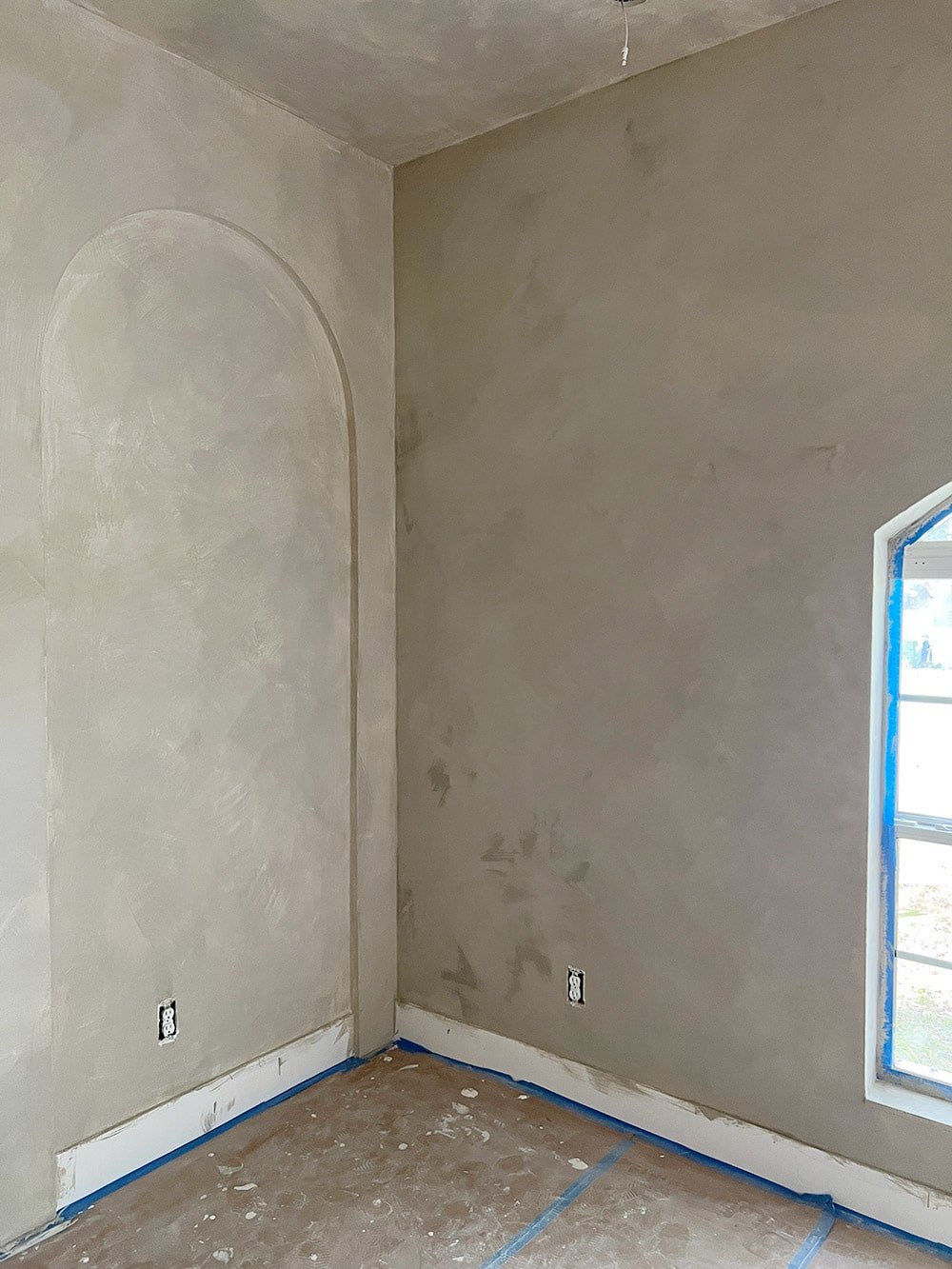
The left wall has one coat, the right wall has two (still drying).
We covered the entire room—ceiling included, to make it feel more finished and ‘cave-like’. We also primed and limewashed the switch plates, AC vents and lights so they wouldn’t stand out as much.
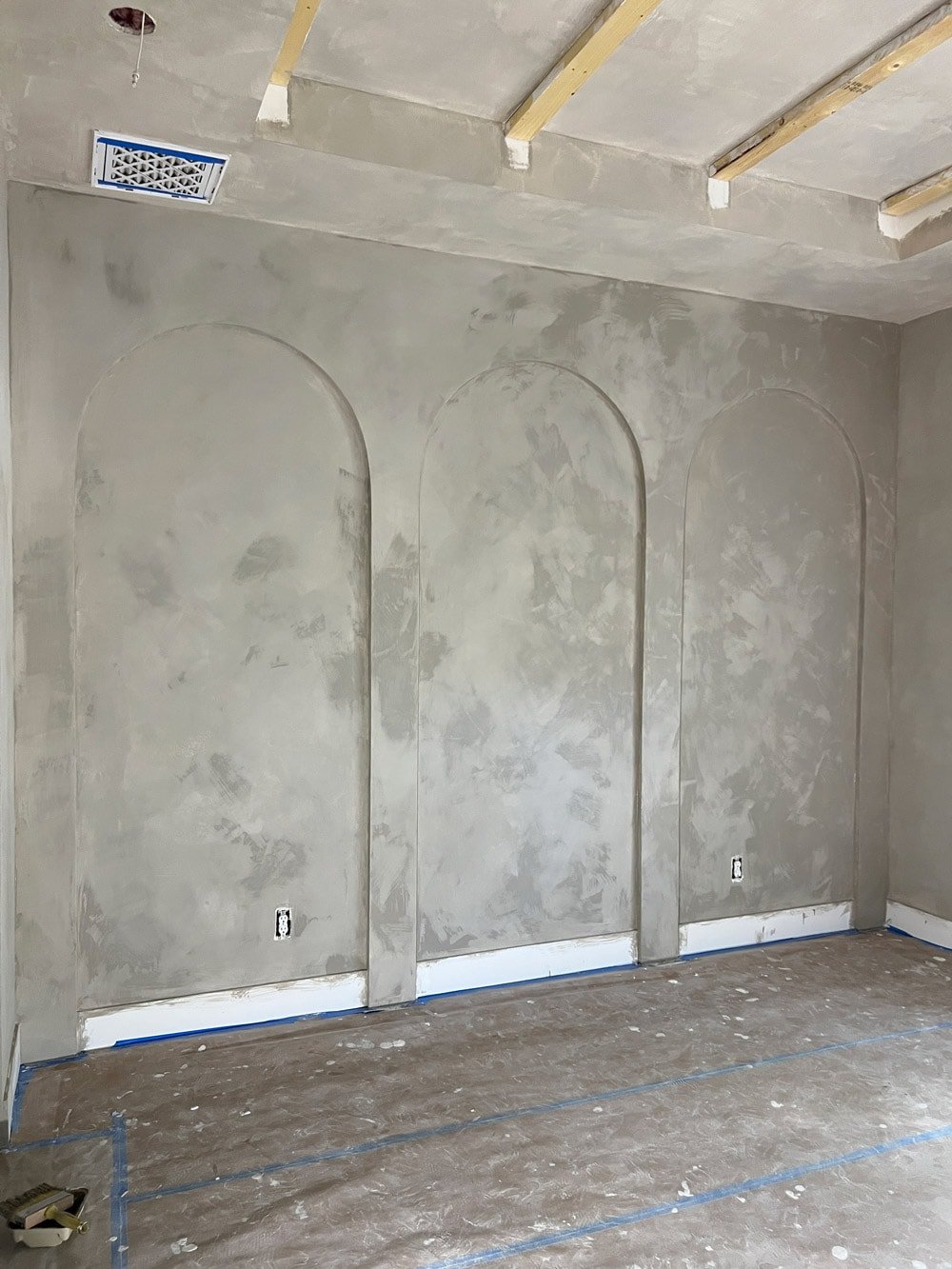
Finally, I painted the doors and trim in a tone-on-tone contrasting color: Sherwin Williams Moth Wing. Lucas gave the old bifold doors a makeover using our DIY Plank door technique.
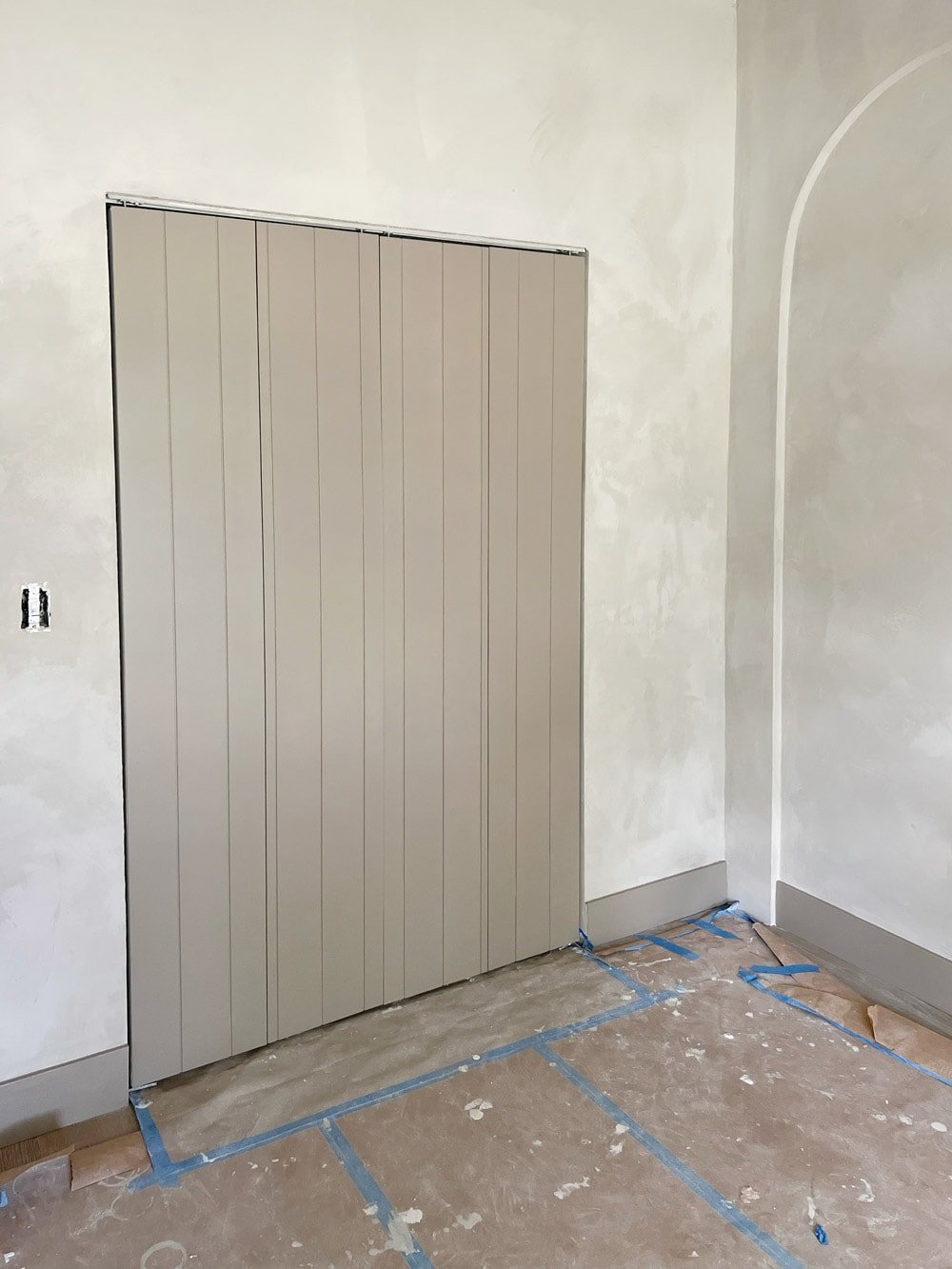
Limewash Bedroom Reveal
Here’s how it turned out!
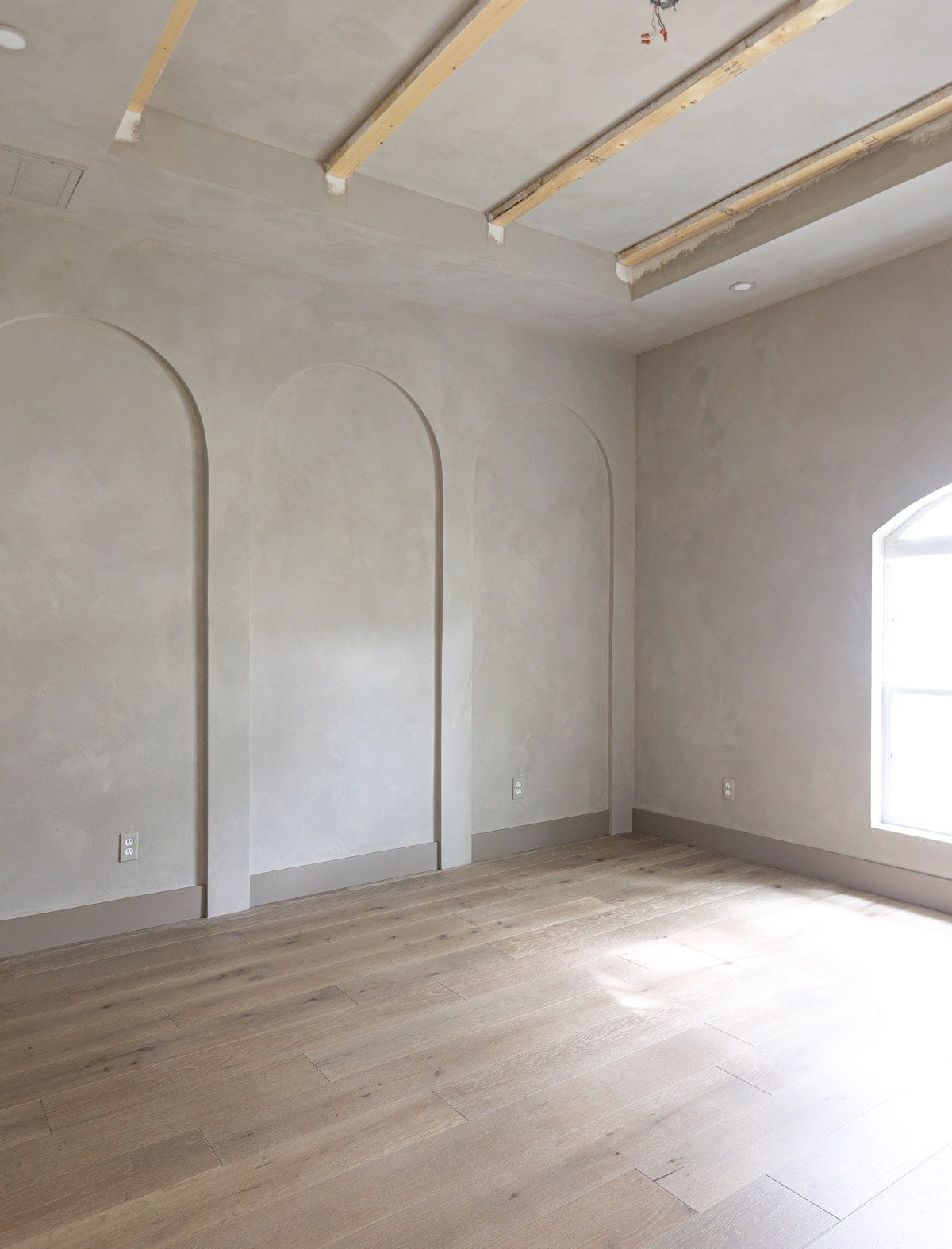
I ended up buying WAY too much limewash… we only used about a gallon of our 5 gallon bucket! Guess we need to find another room (or four) to use it in 😉
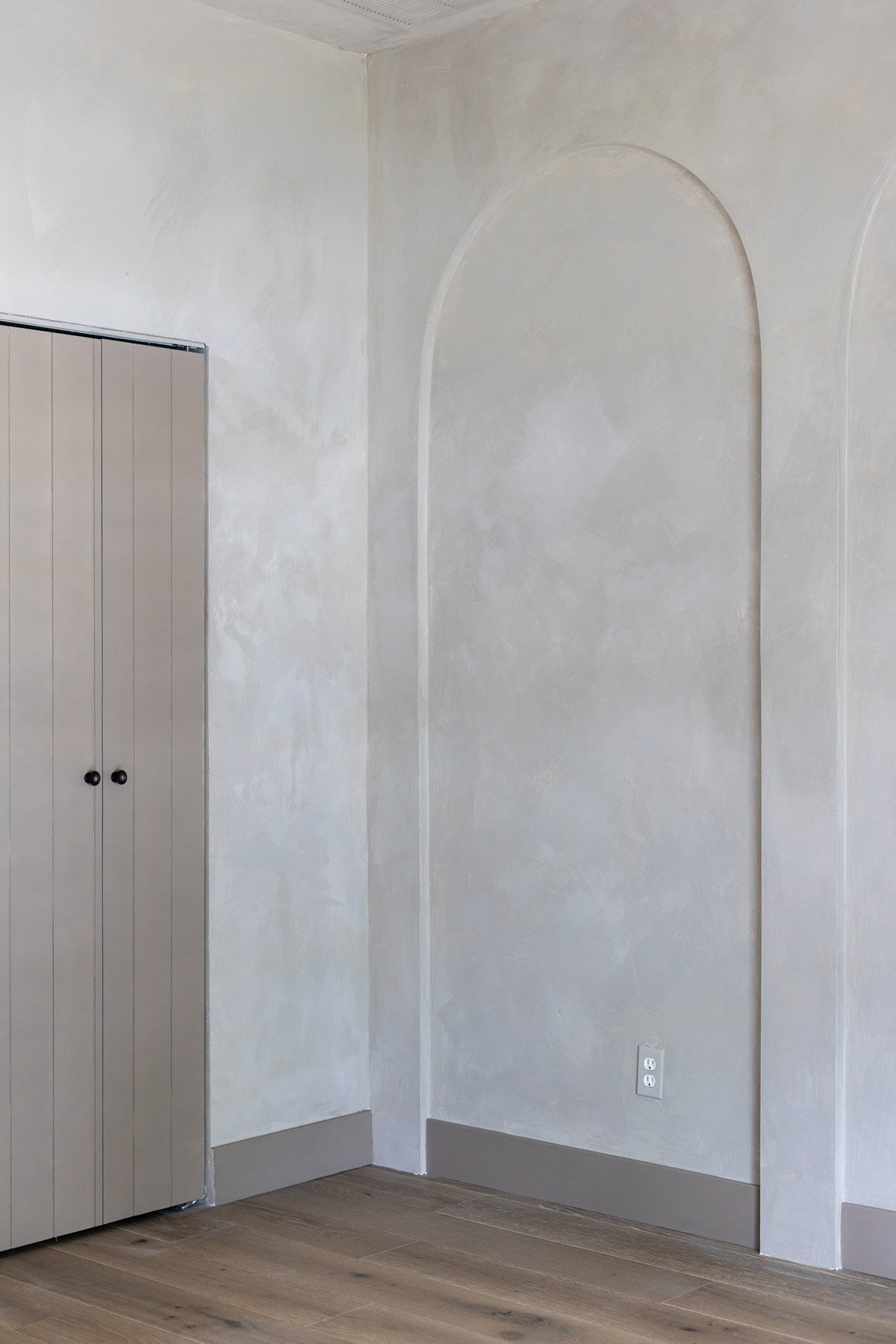
Update: here’s how it looks after the DIY ceiling beams:
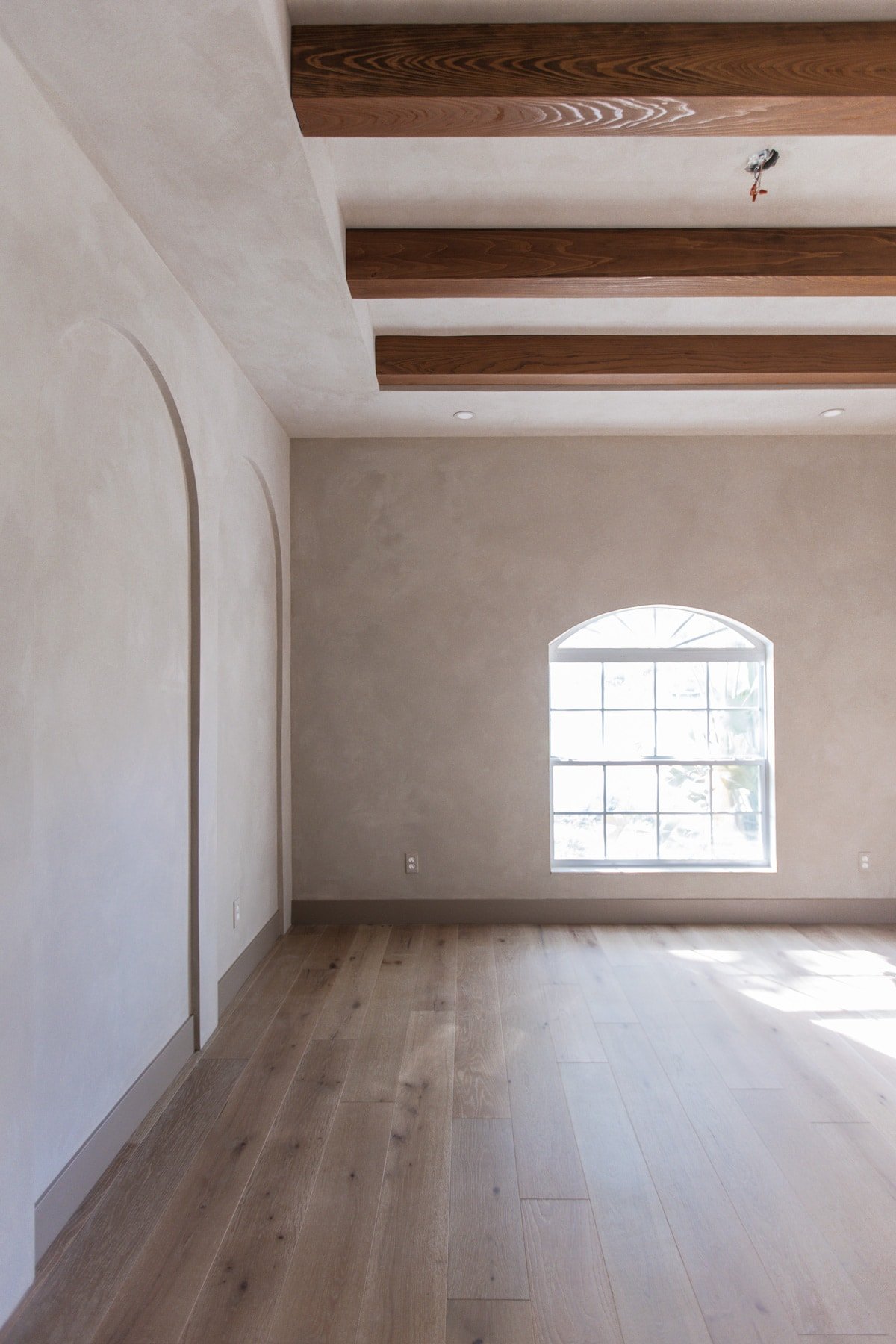
And check out our Modern Mediterranean Bedroom Reveal with links to sources!
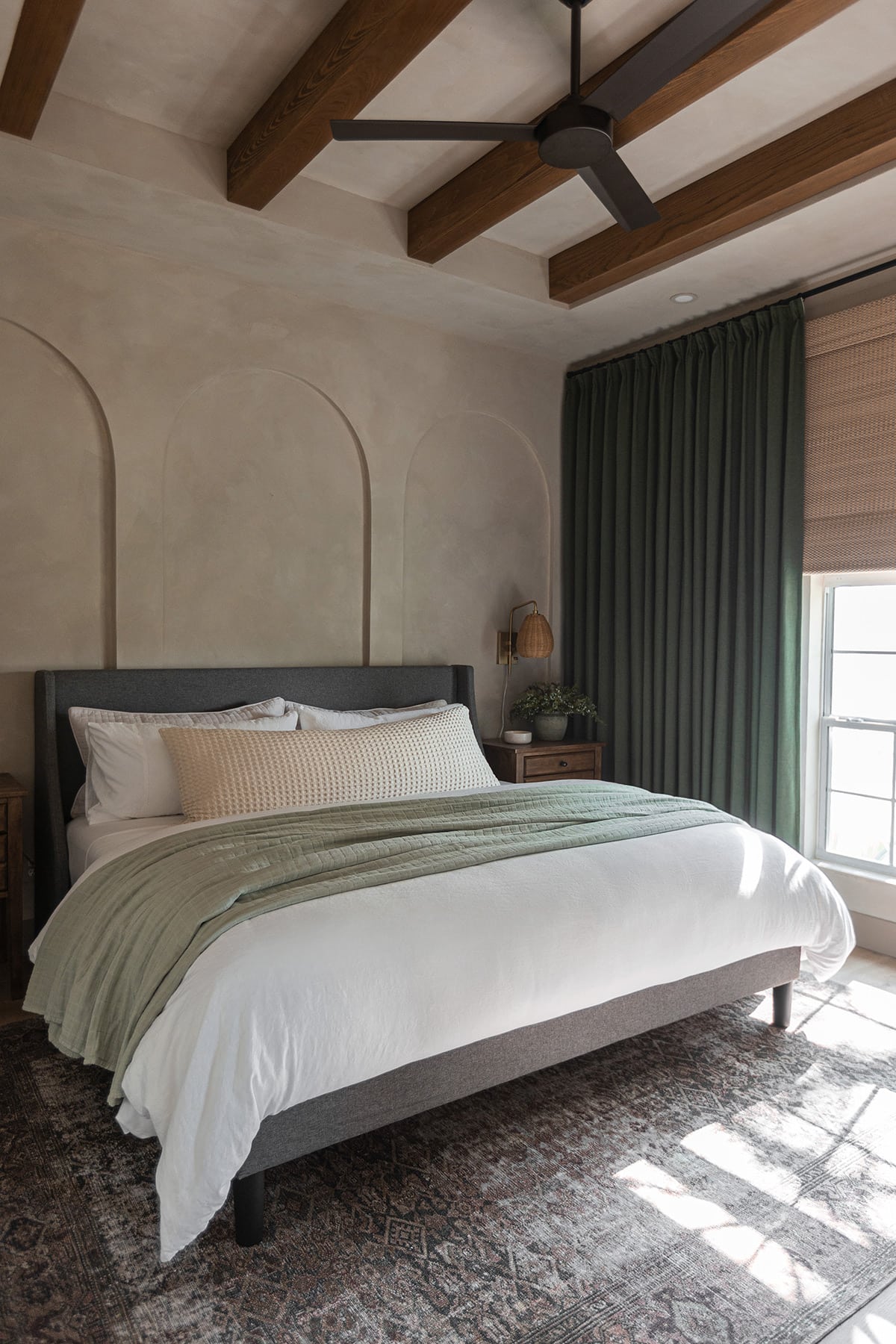
Q&A
The painting technique actually dates back to the Roman empire and is traditionally created from limestone that’s been crushed, burned, and mixed with water to make a lime putty, which is then colored with natural pigments.
Limewash has a consistency of watered-down paint (similar to whole milk). It applies easily with a large brush, and leaves walls with a suede patina finish.
Both Venetian Plaster and roman clay are much thicker, and applied with a putty knife or trowel. They’re best used on smooth surfaces, and create a stone-like appearance that can be matte or polished.
A gentle wipe-down with mild soap and warm water is recommended. You do have to take extra care not to overdo it, as this natural substrate doesn’t cure and harden like latex paint. However, the organic movement and color variation lends itself to concealing any stains/dirt quite well. If too much limewash is removed, you can lightly re-coat the area with a diluted mix and feather it out to blend.
Not necessarily. For higher traffic areas like kitchens and bathrooms, a clear matte sealer is a good idea to protect the finish and make it wipeable. I opted to skip this for our guest bedroom.
Yes! Limewash doesn’t add any texture to your walls, and you can easily repaint them in the future. Just make sure to use a water-based primer first.
There are several companies who manufacture lime wash or “lime paint” products. Portola Paints, Romabio, Color Atelier, JH Wall Paints and Vasari are some of the more recognizable brands available in the US. I used the more affordable Vasari lime paint from Lowe’s on another bedroom project and it turned out great! Any of these reputable brands are fine choices—take a look at their gallery/customer photos and read through their FAQ before deciding.
For this room, I chose Color Atelier after studying examples of their product in real life on their IG, finding the right color, and because I waited until the last minute and it was quick and easy to purchase 😉 You can order directly from their website, but it was a better deal on Amazon after shipping.
Fun holiday content coming up next 🙂


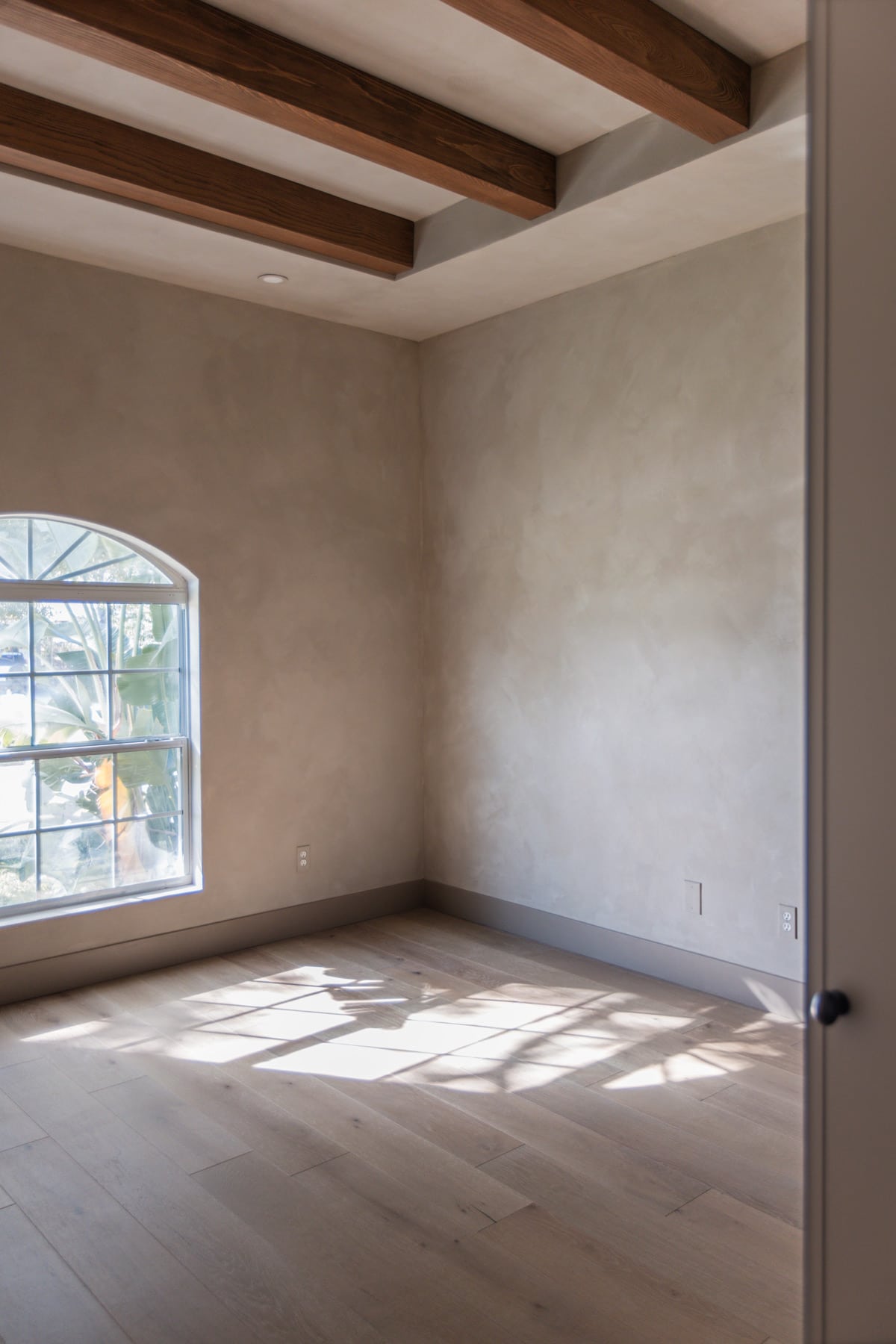
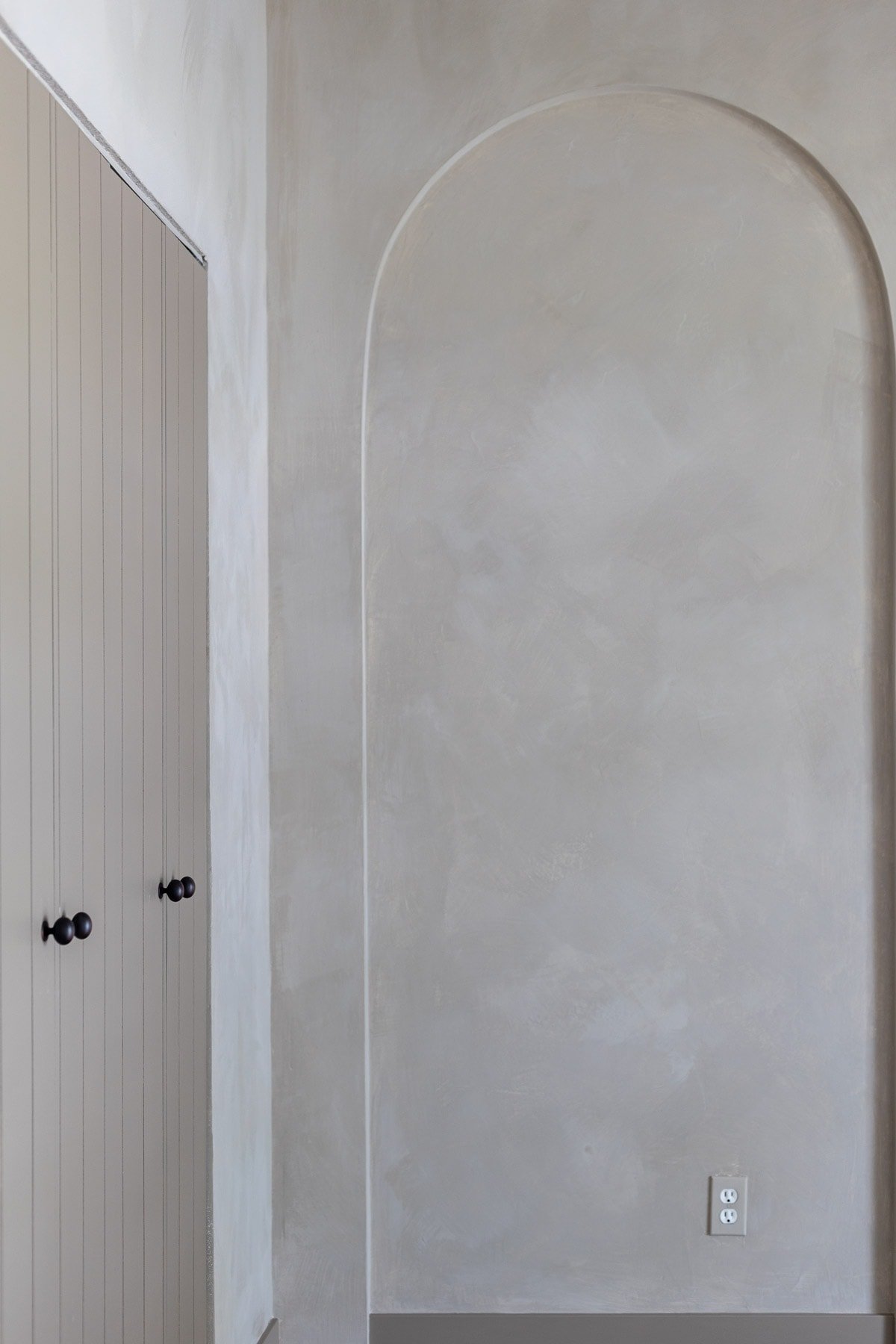
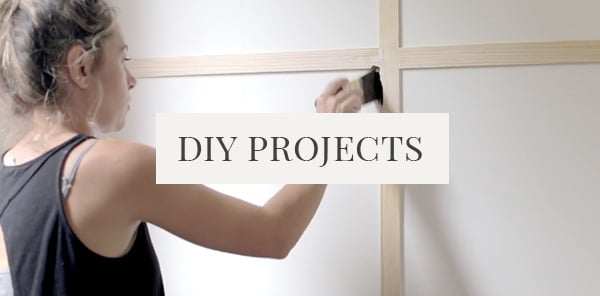
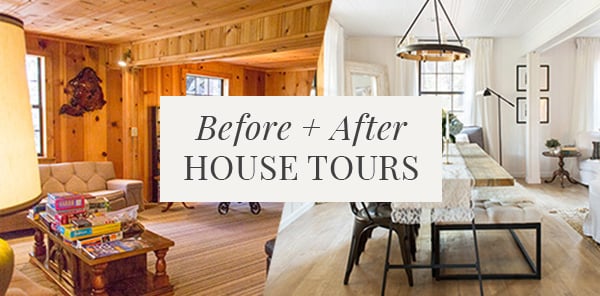
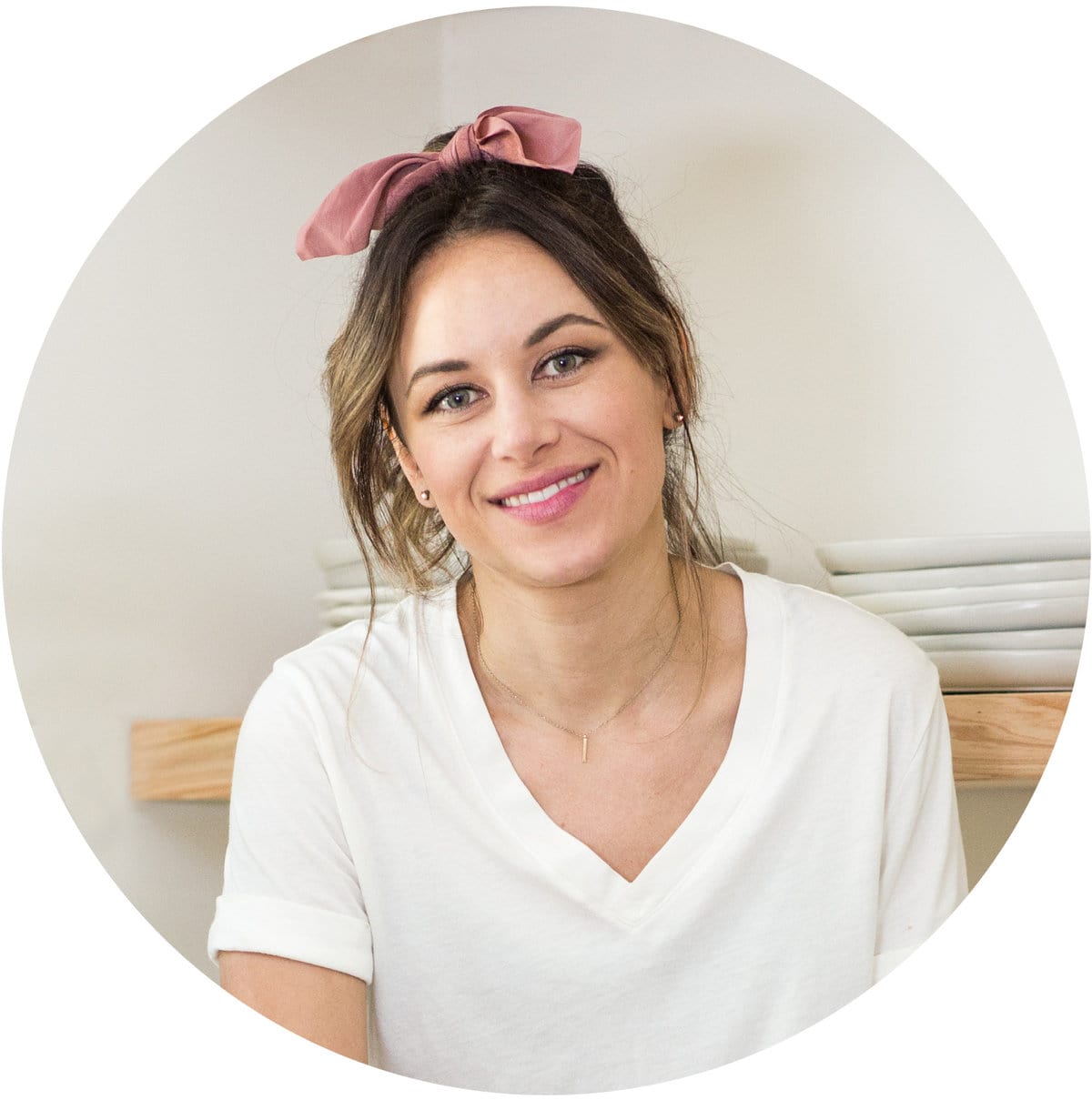

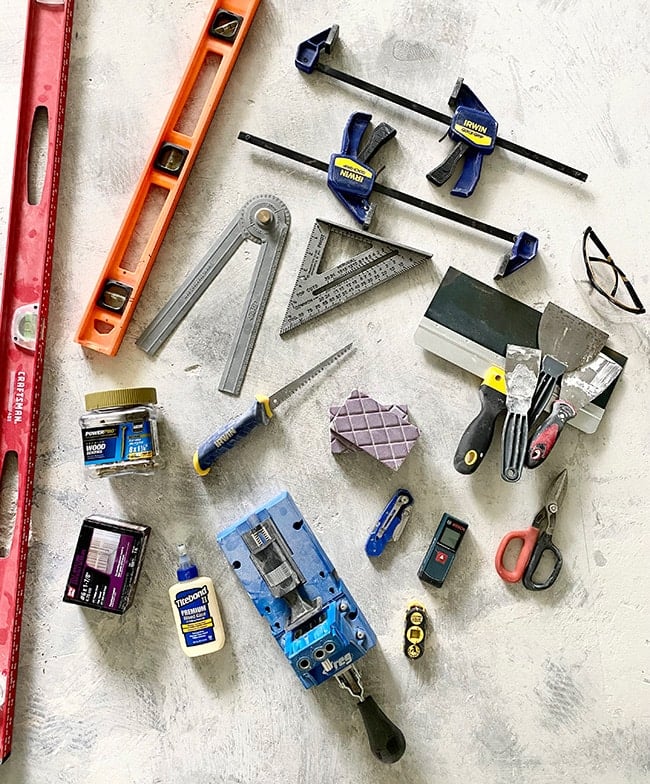
Alix says
I just painted the living room in my short-term rental almost this same colour lime wash and love it. It’s subtle but adds another dimension. I love it!
Leah says
This looks amazing! I know you can dilute limewash paint, but did you have to do that for your room? Or did you use it straight from the can?
Thanks!
Jenna Sue says
Thanks Leah! We didn’t dilute it at all.
Molly says
Love it! I have two questions – one, what color did you use? And two, does it look uncoordinated to do this in only one room and not throughout the house? I want to do this in at least one room, but I’m afraid that it would look too different from the rest of the latex-painted house.
p.s. this totally reminds me of the old Ralph Lauren suede faux paint technique from the late 90s. Even thought it was a fad, the suede always looked good, I thought. But maybe I’m old. lol
Jenna Sue says
Hi Molly, I used Color Atelier Soft Taupe (linked in the post under Supplies). I don’t think it looks odd to only have in one room as long as it matches the style of the house. In our case it does, as the house is a Mediterranean/Spanish design. If you aren’t sure, go with a lighter color which will be more subtle.
Teddee Grace says
So pretty and subtle. I also can’t wait to see this final room reveal.
Jenna Sue says
Thank you Teddee!